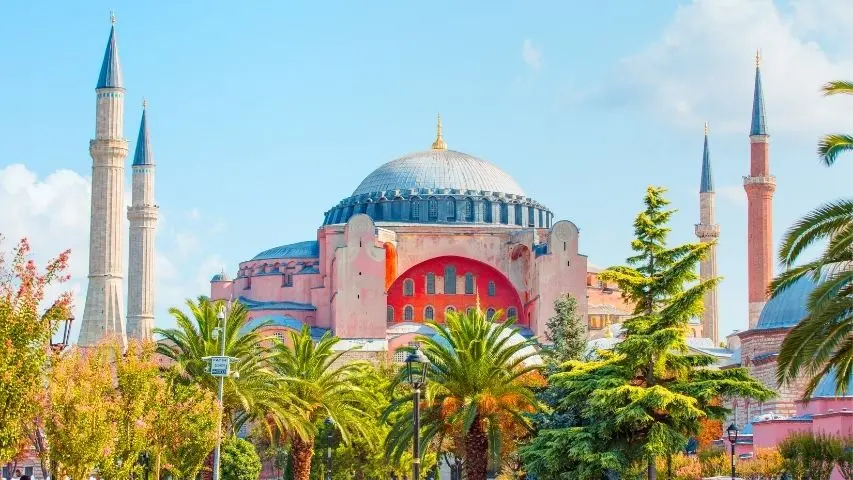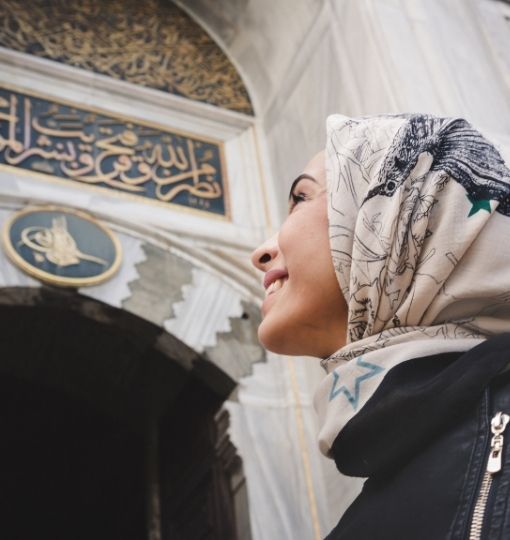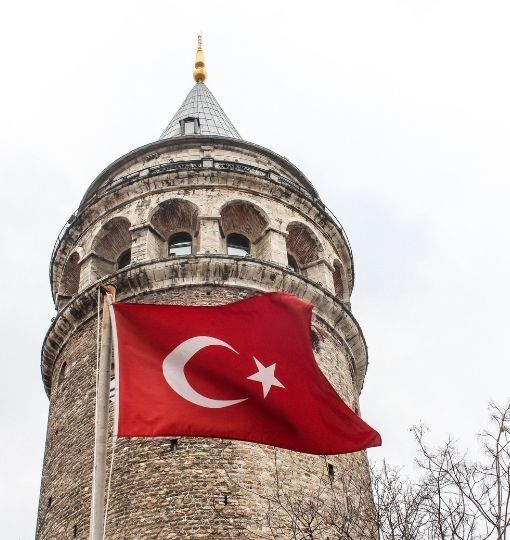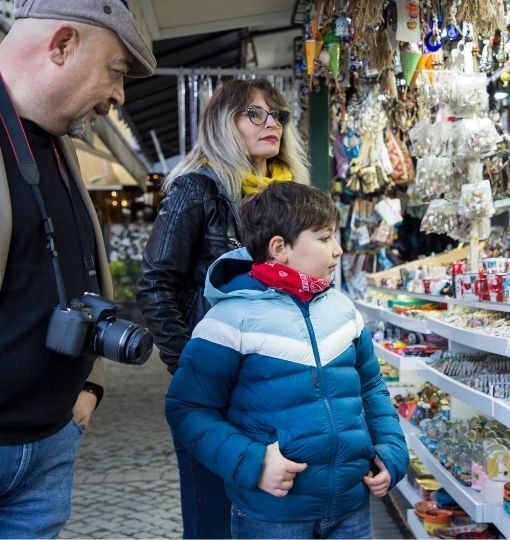Istanbul is a city of dazzling contrasts. Palaces shimmer beside Ottoman mosques, Byzantine churches hide in winding lanes, and every ferry ride brings a different skyline. From the Bosphorus to the Golden Horn, each waterfront tells its own story. Nowhere does that story feel more alive than on the northern curve of the Historical Peninsula, where the inlet’s calm waters mirror centuries of faith, trade and quiet resilience.
Welcome to Fener. Tucked between Cibali and Balat, this hillside quarter was the heart of Istanbul’s Greek Orthodox world for more than five hundred years. Cobbled streets lead you past the red-brick Phanar Greek Orthodox College, the still-active Patriarchal Church of St George and rows of timber houses painted in happy pastels. Recent EU-backed restorations have protected over two hundred historic homes, letting cafés, art studios and guesthouses bloom without erasing local life.
Stay a while, listen for church bells mingling with the call to prayer, and you will feel why Fener is a gem worth discovering on its own.
Fener’s Own Story: A Hidden Quarter on the Golden Horn
Many visitors link Fener with its colorful neighbor Balat, yet this hillside quarter has a character all its own. Walk a few minutes north and the mood shifts. Bright wooden houses still lean over cobblestones, but the air feels quieter, the street rhythm slower, and the Orthodox legacy deeper. Think of Fener as the calmer sibling who guards centuries of stories while Balat chats away next door.
Location & Setting
Fener hugs the southern bank of the Golden Horn between Cibali and Balat. Steep lanes climb toward Fatih, and every turn offers fresh angles of minarets, chimneys, and water glinting below. The map makes the district look small, but its maze of courtyards and shortcuts can fill an afternoon.
Historical Roots
For five centuries Fener was the heart of Istanbul’s Greek community. Merchants, scholars, and ship captains built handsome mansions near the shore and timber row houses up the hill. Even after many families moved away in the twentieth century, Greek letterboxes and street names keep their memory alive.
Architectural Soul
Timber façades wear pistachio, rose, and mustard paint. Bay windows lean over narrow cobblestones, while iron balconies drip with geraniums. A few grander brick houses once belonged to Phanariote elites who served the Ottoman court. Restoration projects respect the quirks: crooked shutters stay crooked, and the scent of old pine lingers in stairwells.
Community & Daily Life
Mornings start slow. Cats of Istanbul stretch on sun-warmed steps, and bakers hang fresh simit on hooks outside. By midday children spill from school gates, students sketch façades, and neighbors share tea on stoops. Evenings bring soft light for photographers and long talks for families who pull chairs onto the street.
Access & Transport
Reach Fener by T5 tram from Eminönü, a Golden Horn ferry that stops at the tiny pier, or coastal buses that glide up from Galata Bridge. Once you arrive, forget wheels. The district’s charm hides in alleys and stairways too narrow for cars, so comfortable shoes are the best ticket to explore.
Ecumenical Patriarchate of Constantinople: The Beating Heart of World Orthodoxy
Few corners of Istanbul carry as much spiritual weight as the walled compound on Dr Sadık Ahmet Street. Here the Ecumenical Patriarch, first among equals for roughly three hundred million Orthodox believers, still presides in the modest basilica of St George. Visitors step through quiet courtyards where Byzantine incense mingles with the smell of beeswax candles and remember that this quarter once spoke Greek more often than Turkish.
From Imperial Capital to Fener
After the Ottoman conquest of 1453 the Patriarchate moved several times before settling in Fener in 1602. Fires damaged the complex in 1720 and 1941, yet each rebuilding kept the three-aisled plan of the church. Look for the Middle Gate in the outer wall. It has been sealed since 1821 when Patriarch Gregory V was executed there during the Greek War of Independence.
Why It Matters Today
The Ecumenical Patriarchate works for unity among the worldwide Orthodox churches and sponsors dialogue with Catholics, Anglicans, and other faiths. Patriarch Bartholomew I, elected in 1991, also speaks out on environmental issues and religious freedom. On major feast days such as Orthodox Easter and Christmas, pilgrims from Greece, the Balkans, and the Middle East crowd the compound for all-night services.
What You Will See
Patriarchal Church of St George
Marble columns, a gilded iconostasis, and reliquaries holding fragments of the True Cross and relics of three early patriarchs await inside. Lighting is low to protect the icons so allow your eyes a moment to adjust.
Patriarchal Library
A small brick building across the garden shelters rare Byzantine manuscripts. Access requires prior permission but you can admire the exterior from the path.
Sealed Middle Gate
The iron-bound gate on the south wall remains closed as a memorial to 1821. Visitors pause here for reflection before entering the main courtyard.
Planning Your Visit
Opening hours: 8.00 AM–4.30 PM daily, though liturgies can close the church to tourists for short periods. Arrive early to avoid waiting.
Admission: Free, donations welcome. Modest dress is expected. Shoulders and knees covered, hats removed inside.
Getting there: Ride the T5 tram from Eminönü to Fener stop in ten minutes, or hop on a Golden Horn ferry from Üsküdar or Karaköy straight to the pier beside the compound. The walk uphill takes five minutes.
Security: All bags pass through an X-ray scanner at the gate. Photography is allowed without flash unless a service is in progress.
Traditions to Witness
On 6 January, the Feast of Epiphany, the Patriarch tosses a wooden cross into the Golden Horn and swimmers race to retrieve it. Crowds line the waterfront well before noon so claim a spot early if you wish to watch this unique ceremony.
Standing in the cool hush of St George you feel both the humility and the endurance of the Orthodox world. The icons glow softly, the relic cases gleam, and history breathes in candlelight. When you step back into the sunlight of Fener the church bells may still echo in your ears.
Fener-Balat UNESCO Rehabilitation Project
The Golden Horn’s wooden row houses once leaned at dangerous angles. Roofs sagged and narrow streets lacked basic services. In 1985 UNESCO placed the Historic Areas of Istanbul—including Fener and Balat—on its World Heritage List and urged action to protect this living museum of Ottoman-Greek life.
A World Heritage Commitment
After the Habitat II conference in 1996 UNESCO and the European Union prepared a feasibility study for a large-scale rescue plan. The result was a 7 million-euro grant agreement signed in 2000 between the EU, Fatih Municipality and the Turkish Treasury to finance a pilot “Rehabilitation of Fener-Balat Districts Programme.”
Inside the 2003-2007 Programme
Work ran from January 2003 to June 2007. Teams documented every façade, offered micro-loans and construction advice through the Fatih Heritage House, and partnered with local craftsmen instead of outside contractors. About two hundred houses, roughly one-seventh of the stock,received new roofs, timber repairs and fresh colours. The project also revived Balat Çarşı, created a social centre and improved waste management.
Early Results and Ongoing Lessons
Restored streets drew cafés, guesthouses and walking tours, proving heritage can fuel economic life without evicting long-time residents. A five-year ban on selling renovated buildings helped curb runaway gentrification in the first phase, though property prices eventually rose and pressure returned. Academics still cite Fener-Balat as a model for participatory urban conservation that balances bricks, livelihoods and identity.
UNESCO’s Continuing Role
When the EU project ended, UNESCO used the momentum to expand technical support across the peninsula, advising on Zeyrek, Süleymaniye and Yenikapı and training municipal staff in timber-house conservation. The Heritage House in Balat remains a hub where owners can seek permits and expert guidance before picking up a paintbrush.
UNESCO World Heritage Centre
Today, as you wander Fener’s pistachio and rose-coloured lanes, look for discreet plaques that mark homes restored during the programme. They are quiet reminders that saving a neighbourhood is possible when culture, community and clever funding meet.
What to Do in Fener
Fener invites you to slow down and let curiosity lead the way. The district is best explored on foot, where each steep lane reveals playful colors, hidden courtyards, and centuries-old whispers of Orthodox life. Below are a handful of experiences that capture its spirit; mix and match them, follow the sound of church bells or the aroma of fresh simit, and let the quarter tell you its own story.
Lose Yourself in the Colorful Lanes
Start on Merdivenli Yokuş, Kiremit Caddesi or Sancaktar Yokuş. Wooden houses in pistachio green, rose pink and sunflower yellow lean over cobblestones while locals chat on stoops. Photographers love the early-afternoon light here, so bring a camera and wander without a map.
Gaze Up at the “Red School”
The Phanar Greek Orthodox College, nicknamed the Red School for its towering crimson bricks, dominates the skyline. The building still functions as a secondary school, so the gates stay closed except for occasional open days and charity bazaars. Even from the street the Neo-Byzantine details are striking, and sunset turns the façade to burnished copper.
Step Inside the Church of St Mary of the Mongols
Walk uphill five minutes to this church, the only one in Istanbul never converted into a mosque. It opens daily 9 00 AM – 5 00 PM; ring the bell if the door is shut. Inside, late-Byzantine icons glow beneath a timber roof saved by a 15th-century ferman from Sultan Mehmet II.
Trace the Old Sea Walls and Ayakapı Gate
Follow the waterfront toward Balat to find battered stretches of the Byzantine sea walls. The Ayakapı gate—credited to architect Mimar Sinan—still pierces the masonry. Pause here to imagine galleys anchoring in the Golden Horn below.
Pause for Coffee with a View
Settle on a balcony at Fanaraki Café for a panorama of the Red School, or duck into Pop’s Balat for retro furniture and slow-drip brews. Many cafés double as art studios or co-working spaces, perfect for a longer break.
Take the Golden Horn Ferry at Dusk
End your visit on the water. Board the hourly Şehir Hatları ferry at tiny Fener pier and glide to Karaköy or Eyüp as the evening call to prayer echoes across both shores. From the deck you catch the best full-length view of Fener’s hillside skyline.
Spend a few unhurried hours and you will see why Fener rewards curious footsteps more than checklists: every corner holds a faded monogram, a shy street cat or the scent of fresh simit.
Discover Fener at Your Own Pace with Istanbul Tourist Pass®
Istanbul Tourist Pass® turns the whole city into an open-air museum you can explore on your own schedule. In Fener and neighboring Balat, the Pass unlocks a detailed audio guide that walks you street by street through wooden mansions, hidden churches, and lively back-alley cafés. Just press play in the app, pop in your earphones, and follow the storyteller’s hints, you decide when to linger for photos or pause for a simit break.
Why Use the Pass Here?
Freedom to Roam: No fixed tour times. Start the audio guide whenever the Golden Horn light feels just right.
Local Stories in Your Pocket: Hear legends of Phanariote merchants, the tale behind the sealed Middle Gate, and tips on the best viewpoints for the Red School.
Seamless Old-Town Sightseeing: After Fener, the same Pass covers Topkapi Palace hosted entry, Hagia Sophia and Basilica Cistern audio guides, the Grand Bazaar walking route, and more: over 100 attractions and services across the Historic Peninsula.
Quick How-To
Buy Istanbul Tourist Pass® online in minutes.
Download the free app and log in.
Find “Fener and Balat Walking Tour with Audio Guide” under Audio Guides.
Head to Fener tram stop, press play, and follow the map.
Extra Perks Nearby
Your Pass also grants skip-the-line or discounted access to:
Galata Tower FREE Online Entry Ticket with an Audio Guide
Museum of Turkish and Islamic Arts Ticket also with a great Audio Guide
Whirling Dervish show at Hodjapasha with a great discount
Unlimited Public Transportation Card delivered to your hotel with a discount!
Free WhatsApp concierge for on-the-spot help on business hours
With Istanbul Tourist Pass® you can greet Fener on your own terms, then dive straight into the rest of Old Istanbul with the same digital pass. One purchase, countless stories waiting around every corner.














.jpg)



